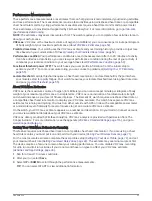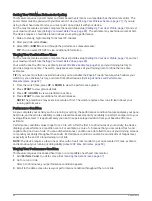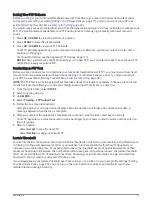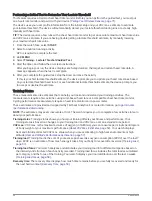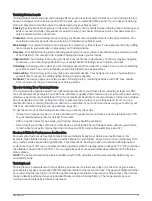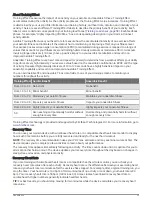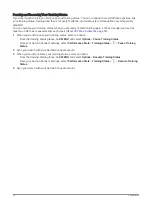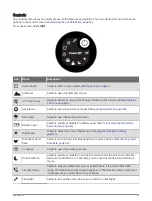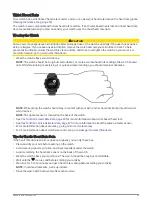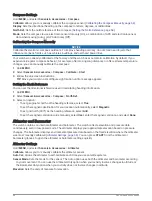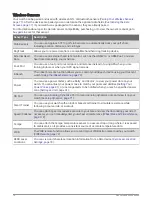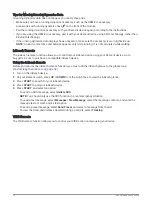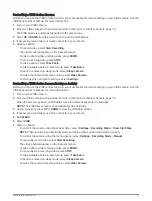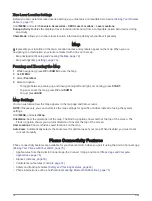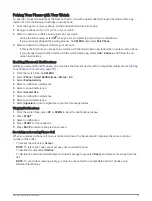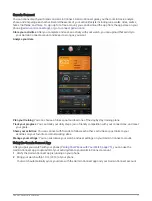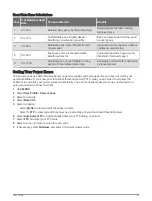
Pulse Oximeter
The Descent watch has a wrist-based pulse oximeter to gauge the saturation of oxygen in your blood. Knowing
your oxygen saturation can be valuable in understanding your overall health and help you determine how your
body is adapting to altitude. Your watch gauges your blood oxygen level by shining light into the skin and
checking how much light is absorbed. This is referred to as SpO
2
.
On the watch, your pulse oximeter readings appear as an SpO
2
percentage. On your Garmin Connect account,
you can view additional details about your pulse oximeter readings, including trends over multiple days (
the Pulse Oximeter Mode, page 67
). For more information on pulse oximeter accuracy, go to
.
Getting Pulse Oximeter Readings
You can manually begin a pulse oximeter reading by viewing the pulse oximeter glance. The glance displays
your most recent blood oxygen saturation percentage.
1 While you are sitting or inactive, press UP or DOWN to view the pulse oximeter glance.
2 Wait until the watch begins the pulse oximeter reading.
3 Remain motionless for up to 30 seconds.
NOTE: If you are too active for the watch to get a pulse oximeter reading, a message appears instead of a
percentage. You can check again after several minutes of inactivity. For best results, hold the arm wearing
the watch at heart level while the watch reads your blood oxygen saturation.
Setting the Pulse Oximeter Mode
1 Hold MENU.
2 Select Sensors & Accessories > Pulse Oximeter > Pulse Ox Mode.
3 Select an option:
• To turn off automatic measurements, select Manual Check.
• To turn on continuous measurements while you sleep, select During Sleep.
NOTE: Unusual sleep positions can cause abnormally low sleep-time SpO2 readings.
• To turn on measurements while you are inactive during the day, select All Day.
NOTE: Turning on All Day mode decreases battery life.
Tips for Erratic Pulse Oximeter Data
If the pulse oximeter data is erratic or does not appear, you can try these tips.
• Remain motionless while the watch reads your blood oxygen saturation.
• Wear the watch above your wrist bone. The watch should be snug but comfortable.
• Hold the arm wearing the watch at heart level while the watch reads your blood oxygen saturation.
• Use a silicone or nylon band.
• Clean and dry your arm before putting on the watch.
• Avoid wearing sunscreen, lotion, and insect repellent under the watch.
• Avoid scratching the optical sensor on the back of the watch.
• Rinse the watch with fresh water after each workout.
Compass
The watch has a 3-axis compass with automatic calibration. The compass features and appearance change
depending on your activity, whether GPS is enabled, and whether you are navigating to a destination. You can
change the compass settings manually (
). To open the compass settings quickly,
you can press START from the compass glance.
Sensors and Accessories
67

